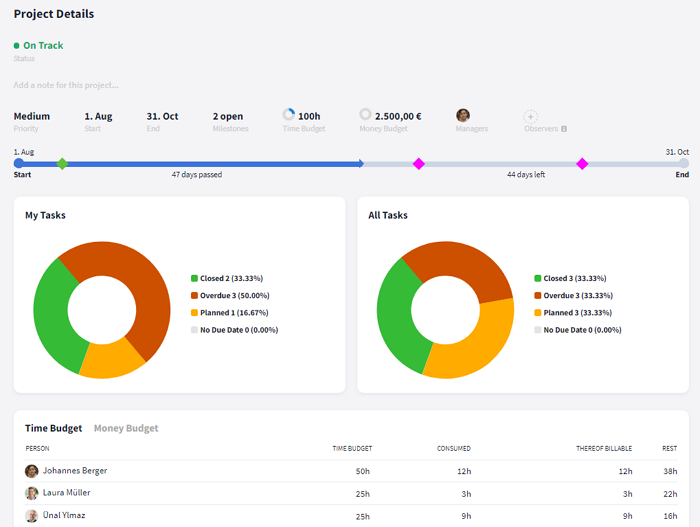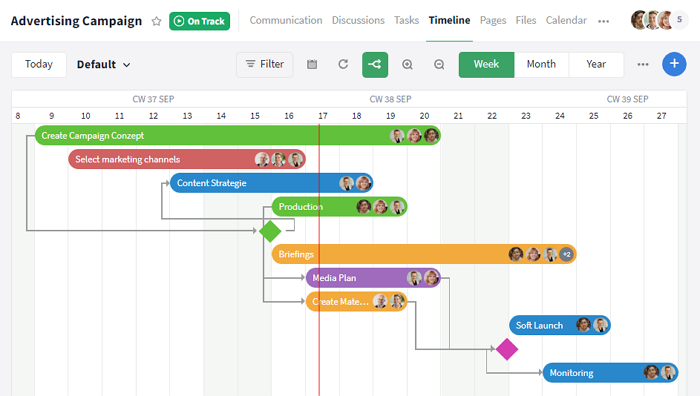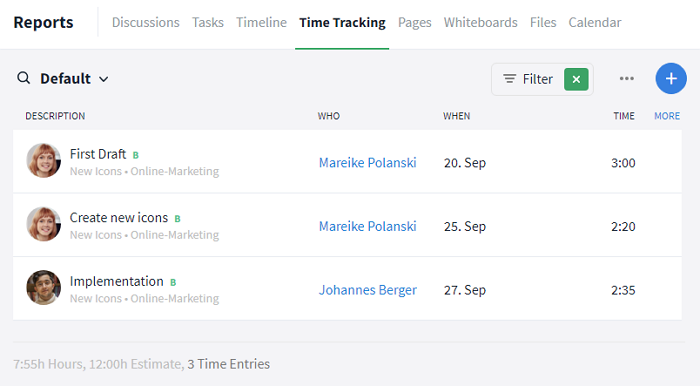It is common to have a lot of questions when a new project is about to begin. How can the project be realized within the set time frame? Which employee has how much time for which tasks? What tools are available to me? How can I create an overview for everyone involved? Questions like these can be answered in a capacity plan.
What is capacity planning?
"Capacity planning" involves the well-prepared and well thought-out allocation of all available resources in a project. The aim is to achieve an optimum utilization of all available resources, usually over a clearly defined period of time, for example for a project or a financial year. A capacity plan can include the following resources:
- Human resources, such as employees
- Financial resources, such as the available funding
- Material resources, such as building materials or commercial goods
- Infrastructural resources, such as the available storage space
- Mechanical resources, such as the vehicle fleet
- Intellectual resources, such as specialized or technical knowledge
Capacity planning is particularly helpful when it comes to staff availability. With the right planning, individual strengths can be deployed more efficiently.
This not only simplifies the workflow and saves costs, but also prevents employees from being overworked. If the process is also transparent for everyone involved, it can also increase motivation and gives your project a positive boost.
Strategic vs. operational capacity planning
In capacity planning, a distinction is often made between strategic and operational capacity planning. These two variants describe a different approach to the orientation of a project.
Strategic capacity planning is geared towards the long term and covers the entire spectrum of different projects within a company. With regard to the company's goals, it involves the efficient allocation of all resources to current and planned future projects. This also includes a look at anticipated future requirements as well as the measures that need to be taken to eliminate shortages or oversupply.
Operational capacity planning describes a much shorter time frame and is usually limited to a single project. Here too, the aim is to achieve the most efficient distribution possible, albeit within a much narrower framework. If there are short-term requirements or surpluses, this can be quickly identified and effectively addressed with operational capacity planning.
What are the benefits of good capacity planning?
- Better project overview: Both you as a planner as well as other team members and stakeholders have a better overview of the projects thanks to the newly gained transparency.
- More efficient personnel and resource planning: You recognize bottlenecks at an early stage and can respond to them during the planning phase.
- Lower project costs: The capacity plan allows you to avoid unnecessary costs, for example by reducing overtime or additional machine rentals.
- Less overload: Your planning not only allows team members to work more effectively, but also prevents them from being overloaded with too much work.
- Greater flexibility: Thanks to the clear overview, you can react more quickly to changes, such as more or fewer orders.
What are the dangers of a lack of capacity planning?
- Waste of resources: Without a plan, machines, materials or employees are not used efficiently and avoidable costs are incurred.
- Bottlenecks and delays: If the workload is not well distributed within the team, certain tasks cannot be completed on time and the project is delayed.
- More stress and pressure: In the absence of a a capacity plan, too many tasks may be assigned at the same time, overloading employees and resulting in a drop in quality.
- Difficulty adapting: Without a plan, it is difficult to react quickly to changes. This lack of flexibility can lead to missed opportunities.
- Dissatisfied customers: If orders are not delivered on time or are of poor quality, customer satisfaction can fall.
How capacity planning is done: Three application examples in Stackfield
Project management and capacity planning go hand in hand. After all, a project runs best when all resources are optimally deployed. In many companies, however, capacity planning is still laboriously carried out using spreadsheet programs such as Excel, which are not optimally designed for such a task.
For example, it is not only time-consuming to keep the data up to date, but errors can also easily occur if different versions of a capacity plan exist in a company and are perhaps also processed by several employees at once.
With a project management software such as Stackfield, you can keep track of all resources, create transparency for everyone involved and develop an efficient capacity plan. Here are three examples of how a tool like Stackfield can help you do this.
The project overview - all details in one place
Project rooms, which you can easily create in Stackfield, give you a quick overview of all the components of a project at any time via the integrated project details – from the money and time budget to the employees involved as well as their tasks to outstanding and completed milestones. This allows you to control and monitor a project – both in advance and during the project. For example, you can define the time budgets of each employee and see how much time and which financial resources have been budgeted.

You can find all the information about a project in the project overview.
However, one project alone is rarely the standard. This is where the project portfolio, which is integrated into Stackfield from the Premium version onwards, is a particularly good support. Here you will find a complete overview of all your projects and can arrange them according to various filters.
Keep an eye on personnel capacity with Gantt Charts and Calendar
With Stackfield, you can quickly answer the question of which employee is working on which task when and for how long. The "Calendar" module integrated in each room allows all tasks and deadlines to be clearly displayed, making capacity planning for employees very easy.

You can easily focus on the progress of the project with a Gantt chart.
With just one click in the "Schedule" module, you also have access to a comprehensive Gantt chart. This allows you to keep an eye on both the progress and the overall duration of a project at all times. Thanks to the various options, the individual project phases can easily be coordinated with one another. If delays or similar occur, the project participants are automatically informed.
Time management with integrated time recording
A new project is coming up and you need at least three full-time employees for it. You have six employees, but without a capacity plan you unfortunately don't know who needs how much time for current projects. An uncertainty that wastes time and money. With Stackfield, this annoying situation doesn't need to occur.

A time recording feature is integrated in Stackfield.
With the help of the integrated worktime recording, the time budget available for a task as well as the processing times of an employee on the project can be clearly recorded. This gives employees an estimate of how long a task should take, while the project manager can quickly identify which tasks have taken longer or shorter than planned. In turn, these insights optimize employee capacity planning and thus both current and future projects.
Conclusion: Get the complete overview with capacity planning
A capacity plan helps you to gain an overview of all available resources, which is particularly important for the effective deployment of personnel. It helps you to make better use of resources, distribute workloads and avoid bottlenecks. As a result, orders can be completed efficiently and on time, which satisfies customers and reduces costs.
Correspondingly, a capacity plan is a important tool for corporate planning. If a company is already using project management software such as Stackfield, this can make working with a capacity plan even easier.
Almost finished...Please click the link in the email and confirm your email adress to complete the subscription process.
Never miss a post. Get awesome insights in your inbox.